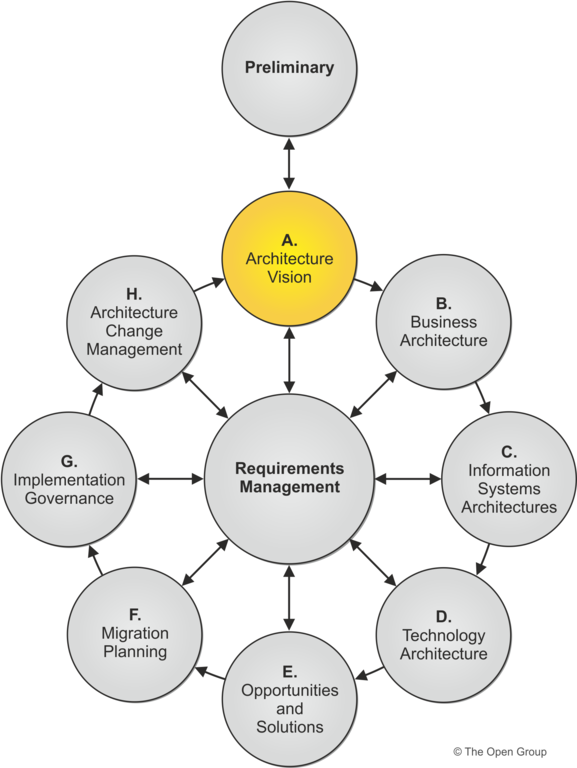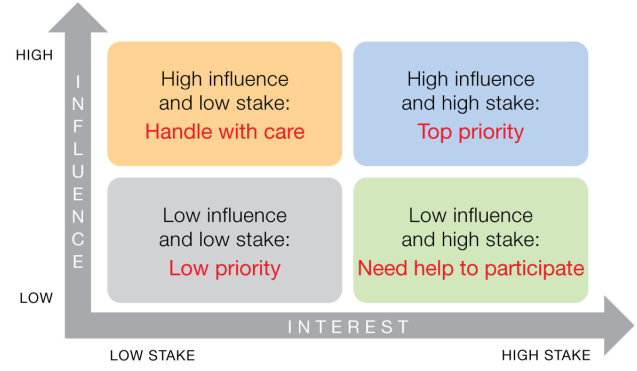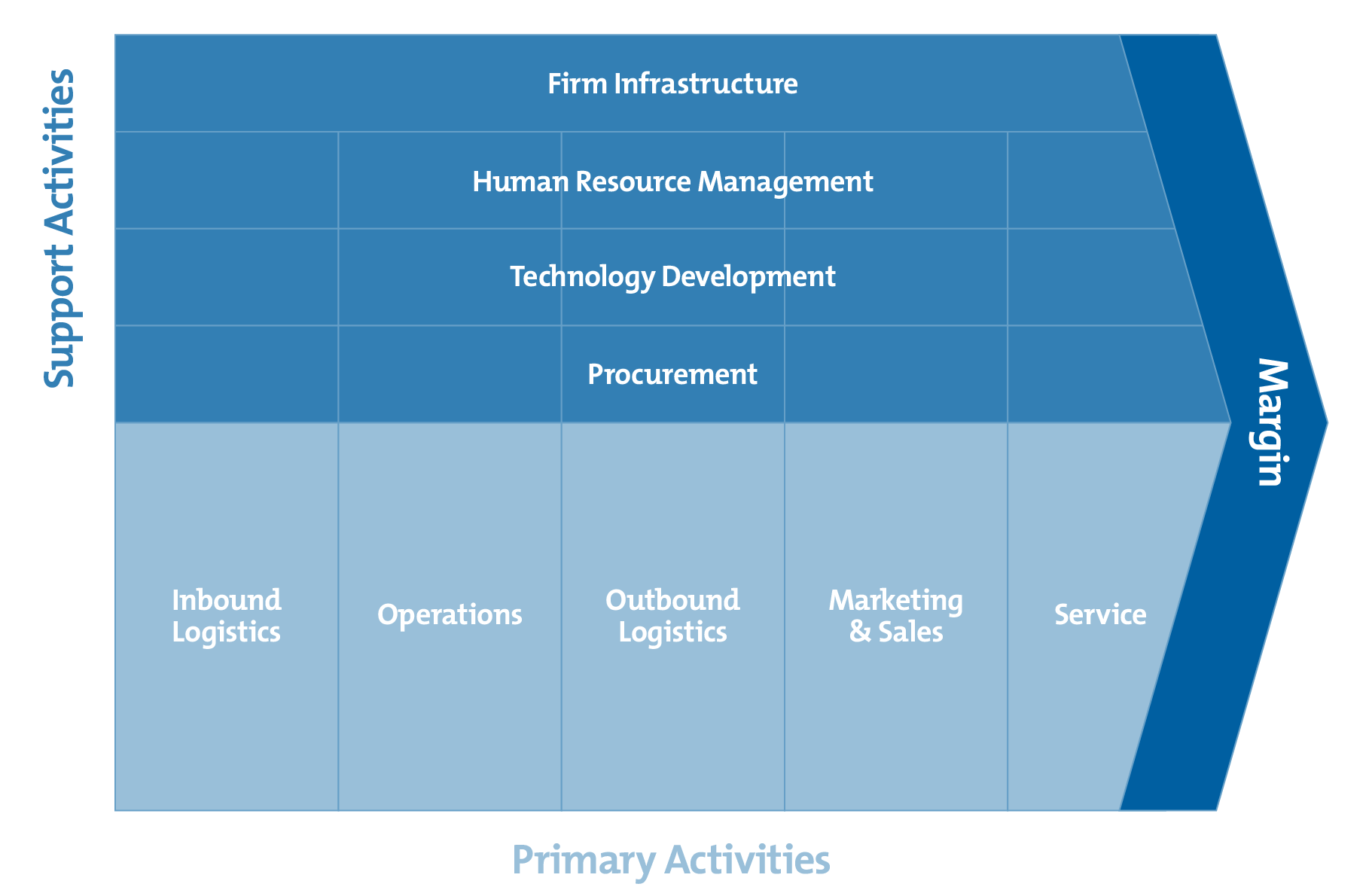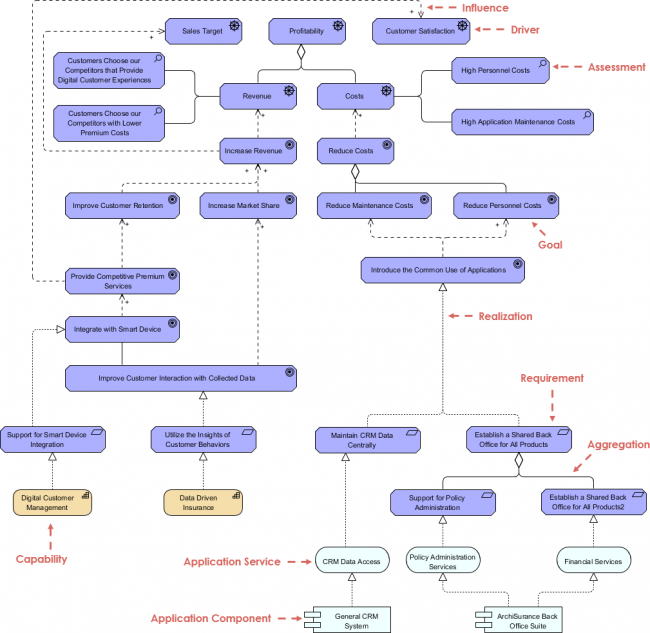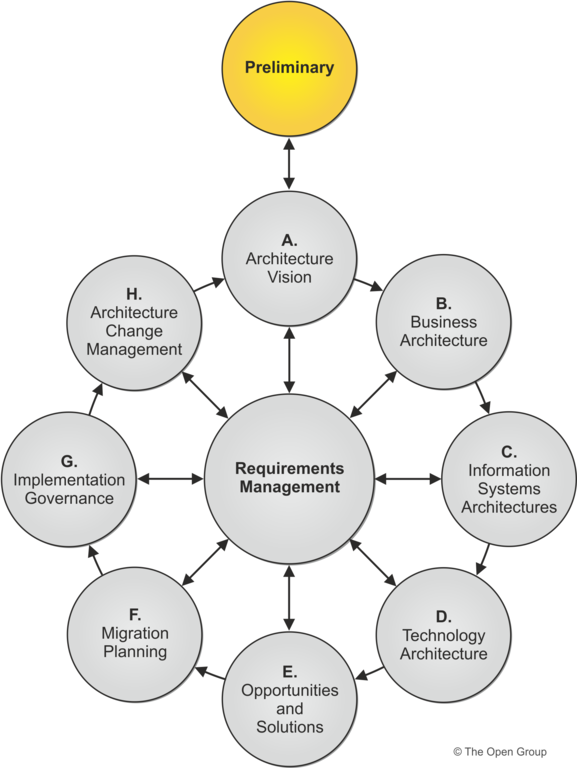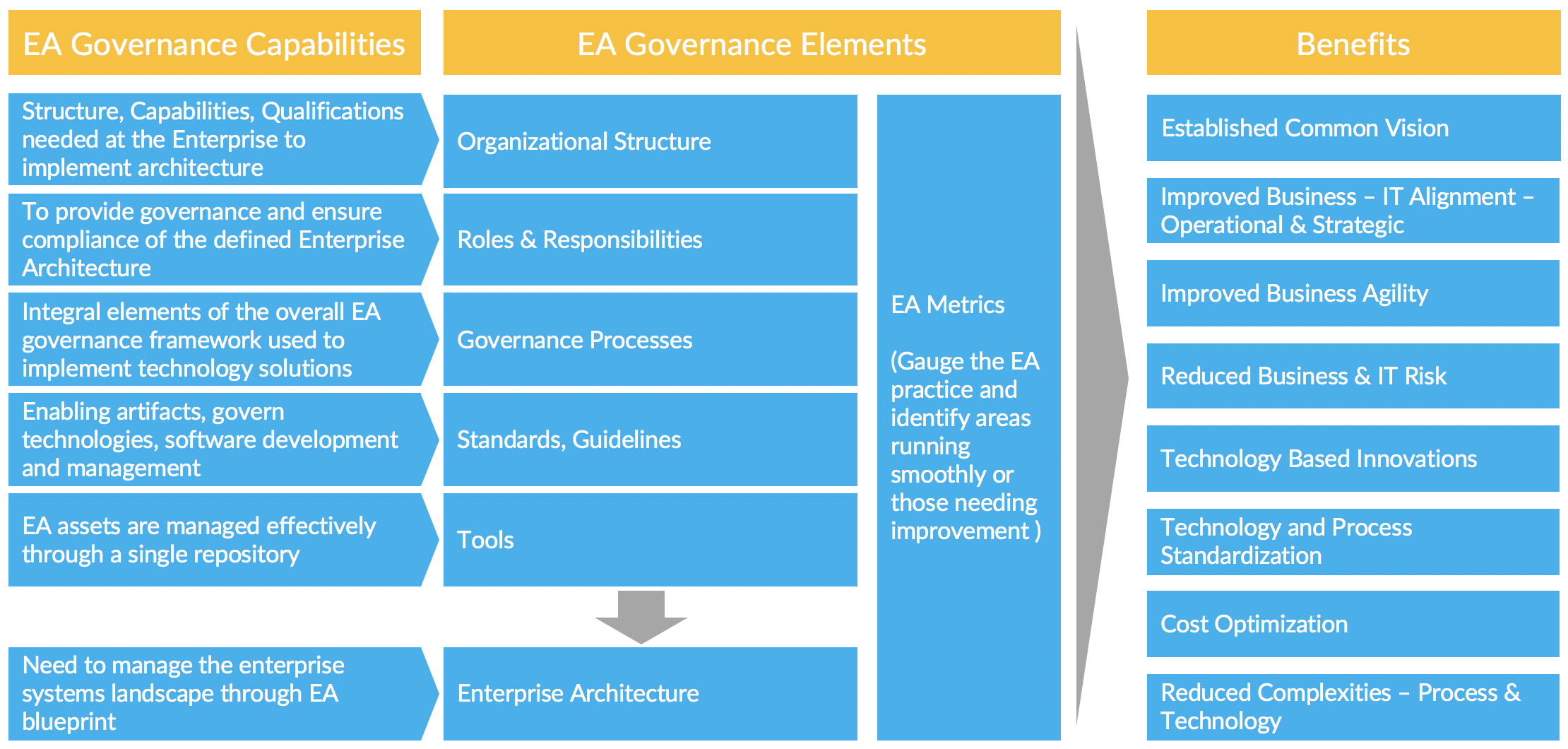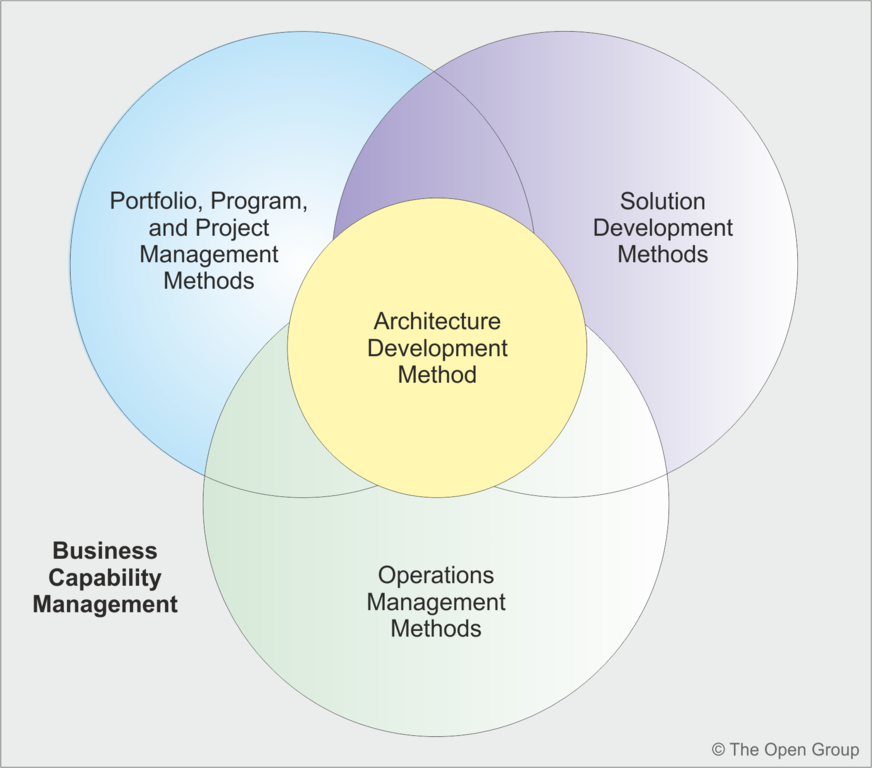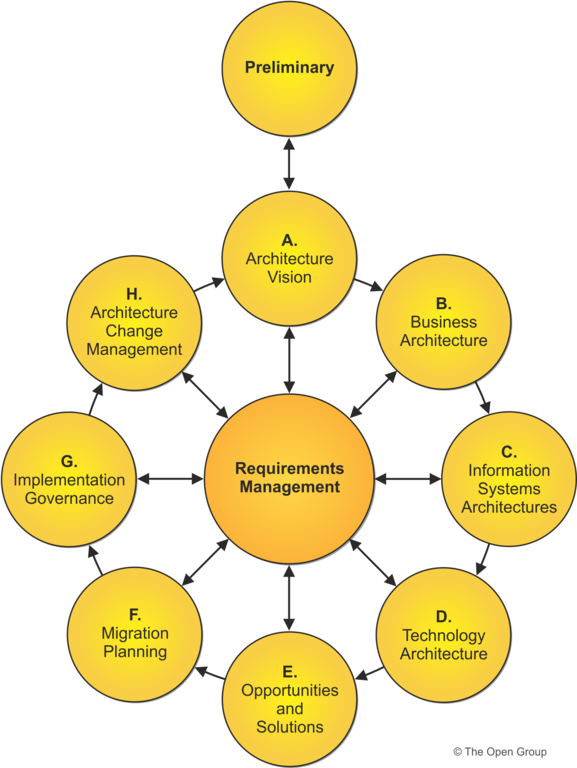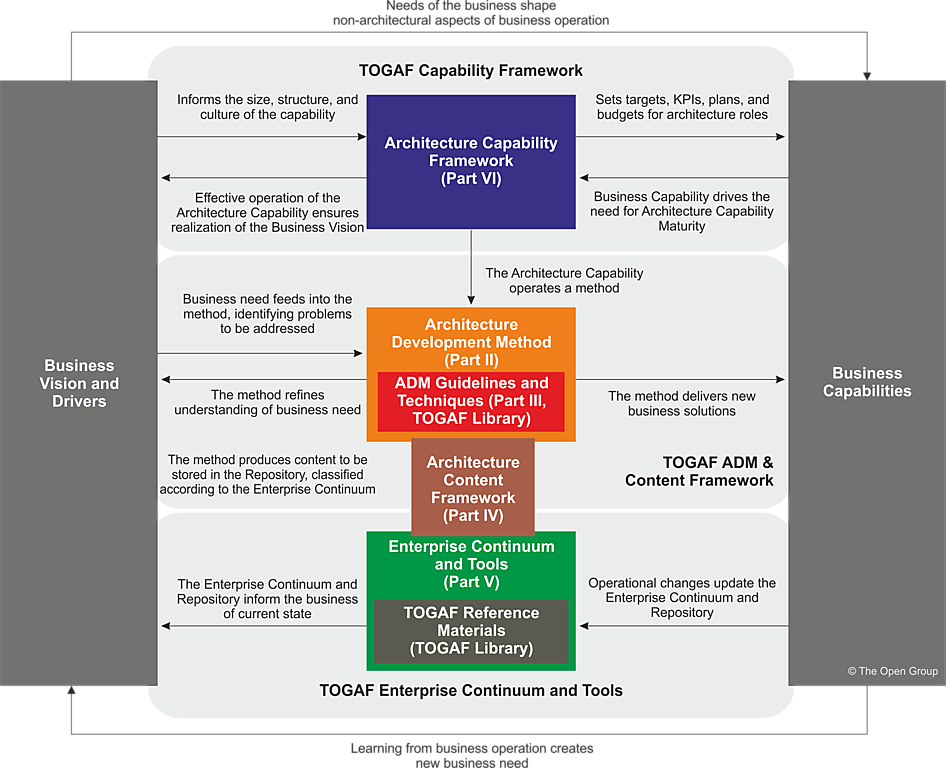Phase B: Business Architecture
This phase describes the development of a Business Architecture to support an agreed Architecture Vision.
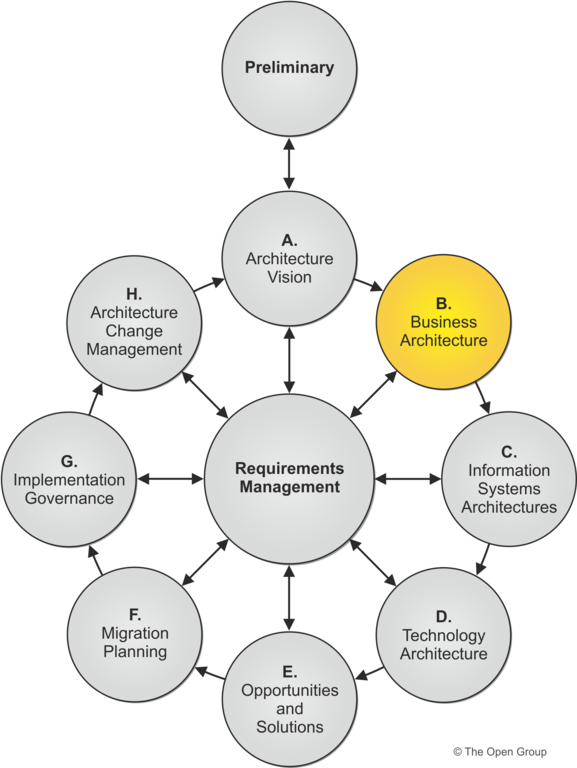
Objectives
Please refer TOGAF ADM Phase B: Business Architecture
Inputs
- Reference Materials External to the Enterprise
- Architecture Repository (Source: Phase A)
- Non-Architectural Inputs
- Request for Architecture Work (Source: Phase A)
- Business principles, business goals, and business drivers (Source: Phase A)
- Capability Assessment (Source: Phase A)
- Communication Plan (Source: Phase A)
- Architectural Inputs
- Organizational Model (Source: Preliminary Phase)
- Tailored Architecture Framework (Source: Phase A)
- Approved Statement of Architecture Work (Source: Phase A)
- Architecture Principles (Source: Phase A)
- Enterprise Continuum
- Architecture Repository (Source: Phase A)
- Architecture Vision (Source: Phase A)
- Draft Architecture Definition Document (Source: Phase A)
Steps
Outputs
- Refined and updated Architecture Vision
- Statement of Architecture Work
- Validated business principles, business goals, and business drivers
- Architecture Principles
- Draft Architecture Definition Document
- Draft Architecture Requirements Specification
- Business Architecture components of an Architecture Roadmap
Artifacts
- Catalogs:
- Value Stream catalog
- Business Capabilities catalog
- Value Stream Stages catalog
- Organization/Actor catalog
- Driver/Goal/Objective catalog
- Role catalog
- Business Service/Function catalog
- Location catalog
- Process/Event/Control/Product catalog
- Contract/Measure catalog
- Matrices:
- Value Stream/Capability matrix
- Strategy/Capability matrix
- Capability/Organization matrix
- Business Interaction matrix
- Actor/Role matrix
- Diagrams:
- Business Model diagram
- Business Capability Map
- Value Stream Map
- Organization Map
- Business Footprint diagram
- Business Service/Information diagram
- Functional Decomposition diagram
- Product Lifecycle diagram
- Goal/Objective/Service diagram
- Business Use-Case diagram
- Organization Decomposition diagram
- Process Flow diagram
- Event diagram
Approach
Modeling Techniques
- Activity Models (a.k.a. Business Process Models)
- Use-Case Models
- Class Models
- Others
- Node Connectivity Diagram
- Information Exchange Matrix
